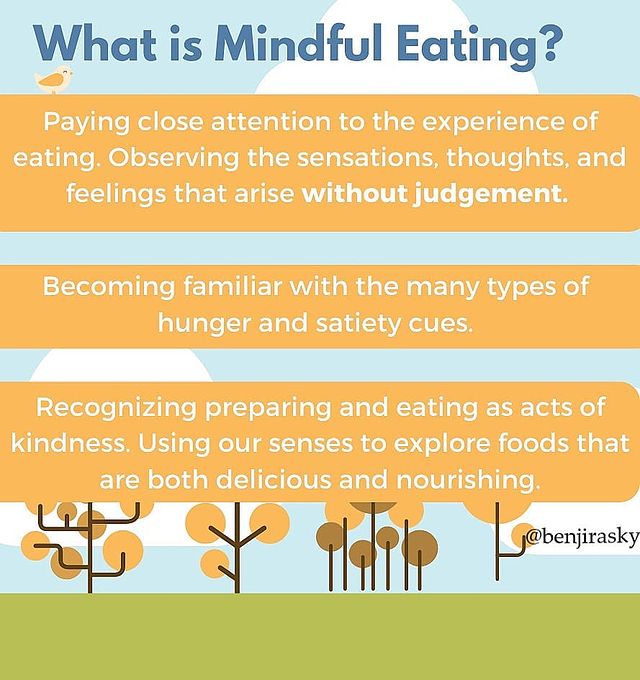If you have a difficult relationship with food and diet, you’re in good company. Many of us are confused about this basic daily need of every human (and every other organism).
There is no shortage of culprits for this confusion, but I find one common theme throughout: the decision of what, when, and how much we should eat has been unintentionally outsourced.
We now turn to sources as varied as advertisement, doctors, nutrition and food science, our mother, social media, and the US Department of Agriculture for guidance!
Even those of us who try to eat as healthily as possible or are trained in parsing out the research can get our wires crossed with so much information from so many inputs.
And this does not apply only to emotional or binge eating.
Raise your hand if you have ever eaten something and immediately regretted it! Heartburn? Gas and bloating? Running to the bathroom to avoid a disaster? Know you’re lactose intolerant (like most of the world) but can’t give up cheese? If your hand isn’t in the air, well…
I find myself constantly thinking about which foods I have to avoid due to sensitivities, and how my body will react to foods I didn’t personally prepare.
But we can step off this treadmill and improve our relationship with food.
There are a ton of great approaches to doing so — and they’re not mutually exclusive. Mindful eating, which I’ll cover today, is conducive with intuitive eating and “anti-diet” approaches, as well as therapeutic diets for specific conditions. In fact, mindfulness and mindful eating are integral foundational skills for any of these approaches.
The best part? Anyone can do it, and it is virtually free!

What is Mindful Eating?
Mindful eating is a powerful tool to reset your relationship with food. But what is it, exactly?
Mindful eating is paying close attention to the direct experience of eating. In essence, it’s applying mindfulness to eating. Sounds simple, right? It is, but simple does not mean easy.
Mindful eating is the practice of observing the sensations, thoughts, and feelings that arise during and around the eating experience, without judgement.
Just like mindfulness meditation, we are training our minds towards this moment, right now, in order to gain insight into the mind. And just like meditation, this practice is a winding path. We will continue to fall off the path and get lost in thought, but training helps us return to the moment.
Some mindful eating guidance may instruct you to pay attention to hunger levels, to use a scale to get in touch with your physical hunger cues, or even tell you when to eat.
I prefer, however, to focus on using my attention to become familiar with the many types of hunger and satiety.
This centering allows you to develop attunement into what you need in any given moment, and helps you use your senses to explore foods (and other activities) that are delicious and nourishing to your specific needs in that moment (more on this later).
This tuning-in helps you derive real satisfaction from one of the true joys of life, reminding you that preparing and eating are acts of love for yourself and others.
The Usefulness of Eating Mindfully
We were all born with natural eating instincts. However, these instincts can be easily clouded by food and diet industry marketing, and social and cultural pressures. In turn, we can internalize those pressures and transform them into conditioned thought patterns around food.
A mindful eating practice helps us get reacquainted with those instincts.
Awareness during the eating experience allows for more satisfaction from your food while deepening your understanding of your mind, and acceptance of your body.
It can also give you the tools and mindset to navigate the nuance and complexity of food and nutrition.
With practice, you can learn to listen to your body’s natural cues and re-establish trust in your intuition. This creates more freedom from external influences, and even your internalized thoughts around food.
With practice, you can know, deeply, what is best for you.

Mindful Eating Basics
You don’t have to be a mindful eating master to start seeing its benefits!
I recommend starting with one or two basics that I’ll share with you in a moment. However, know that these are guidelines — and not rules — to help you become conscious about how, what, when, and why you eat.
I find the following guidelines to be most important as you get started, especially if you’re having any kind of digestive trouble.
Relax
Ideally, you should eat seated and comfortable, rather than rushed, moving around, driving, over the sink, or at your desks while working. I know this may sound like a luxury, but your body cannot be in its rest and digest state while it is, instead, in fight or flight.
There are many ways to quickly shift into a parasympathetic (relaxed) state, such as taking a few slow out-breaths (a “physiological sigh”), doing a short meditation or vagal massage, giving thanks, and expressing gratitude. It doesn’t take much to get the body in a place where it is ready to accept, digest, and assimilate our food.
Slow down and chew your damn food!
Remember to chew and savor each bite. There is a ton of interest in gut health and the microbiome these days (which is great!), but we need to take a literal top-down approach to supporting the gut. Each step of digestion is turned on by the one before it.
Adequate chewing is better than any digestive enzyme or probiotic. This is not trivial. A meal should last at least 20 minutes, however, on average, most people only spend seven minutes eating!
Pay attention
For most of human history, a meal was one of the two most exciting and respected activities. Not any more. Now we have a limitless stream of stimuli. But you can choose to honor your ancestors (and food producers), by making the act of enjoying your meal the main event.
Let all of your attention be on the complete range of sensations available in each bite, and feel the joy of consuming it.
Try to minimize distractions. Even when enjoying a meal in good company, you can use your manners as part of your mindful eating practice! Listen while you chew, and put down your fork when you are talking.
When you forget, do not fret. As we say in meditation, just begin again.
Eating undistracted is the hardest one for me. I grew up eating in front of the TV, and it’s a tough habit to break. Now, I have to remind myself that if I am unable to pay attention to my food, then it’s not exciting enough — and it is time to find or make a new recipe.
These three basic guidelines create a solid foundation for further exploration and tuning-in to our needs. I find these come a bit easier for folks who have an active mindfulness practice, but it is not required — and eating is as good an entry point as any other flow of sensation to meditate on.
“When practiced to its fullest, mindful eating turns a simple meal into a spiritual experience, giving us a deep appreciation of all that went into the meal’s creation as well a deep understanding of the relationship between the food on our table, our own health, and our planet’s health.”
-Thich Naht Hanh
When you’re ready to go to the next mindful eating level, or if you’re having trouble grounding yourself with these three guidelines, a mindful eating journal may be just what you need! I’ll cover what that is and how to use it in my next article!
Image credits: Benji Rasky and Pablo Merchán Montes.

So, I shouldn’t just mindlessly shove food in my mouth? I knew I was doing something wrong. (Great article)
Thank you! It is possible to mindfully shove food in your mouth.
Great article. Thank you for sharing – this is something I really need to work on!
Thank you! Baby steps are the way. I am happy to help if you need further guidance.